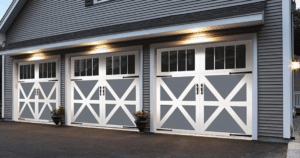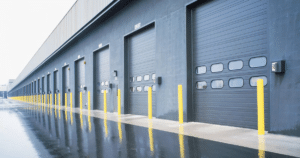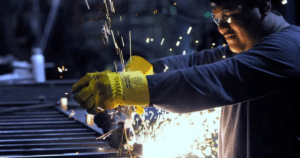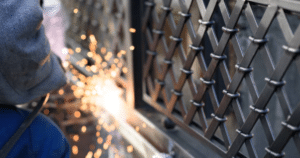Looking for reliable garage door spring replacement services in Roundup, MT? Find local experts who can fix your garage door springs fast.
Garage door spring replacement is an essential task for homeowners looking to maintain the safety and functionality of their garage doors. The springs are more than just mechanical components—they are the heart of the door’s operation, balancing its weight and making the process of opening and closing smooth and safe. This guide explains how these springs function, how to replace them, and why regular maintenance is key to extending their life.
In addition to the basics of garage door spring replacement, this guide delves into the often-overlooked roles that spring play. For example, they help reduce noise, support the door opener, and even contribute to energy efficiency by ensuring a proper seal against the floor. You’ll also learn about various factors influencing spring longevity, from environmental conditions to installation quality, and why understanding these can help you make informed decisions when it’s time to replace or upgrade.
For those looking to take matters into their own hands, this guide also covers essential maintenance tips and the specialized tools needed for a safe spring replacement. With a range of options like high-cycle, galvanized, and dual-spring systems, this comprehensive guide equips you with the knowledge to choose the right springs for your garage door and understand when it’s best to seek professional help. Keep reading to ensure your garage door remains safe, quiet, and functional for years.
The Hidden Roles of Garage Door Springs in Overall System Performance
Garage door springs do much more than just lift the door. They play an intricate role in the entire door system’s health:
- Maintaining Door Balance and Alignment: Springs help balance the door, ensuring it remains level as it moves along the tracks. When one spring starts to weaken or fail, it can cause the door to become unbalanced, leading to alignment issues over time. This imbalance can strain the tracks, cables, and rollers, which may cause premature wear.
- Reducing Stress on the Garage Door Opener: By counterbalancing the door’s weight, springs lessen the load on the opener. If the springs are weak, the opener motor has to work harder, potentially shortening its lifespan. Regularly replacing springs can help preserve the health of your opener.
- Impact on Energy Efficiency: Springs also play a role in energy efficiency. When the garage door operates smoothly, there is less air leakage around the door. Well-functioning springs allow the door to seal better against the floor, minimizing drafts and temperature fluctuations.
- Noise Reduction in Daily Use: When springs are in good condition, they reduce the noise generated during door operation. A weakened or unbalanced spring can cause extra vibrations, leading to a noisy opening and closing process. Replacing worn springs ensures quieter garage door operation.
Understanding these roles of garage door springs highlights the importance of timely replacement and maintenance, which benefits the entire garage door system and prolongs its lifespan.
Factors That Affect the Lifespan of Your Garage Door Springs
While typical new garage door springs last around 10,000 cycles, several factors can influence their longevity:
- Climate and Environmental Conditions: In areas with extreme temperatures, springs can wear out faster. Cold weather causes brittle metal springs, increasing the chance of snapping, while high humidity can cause rust.
- Frequency of Use: The more frequently you use your garage door, the faster the springs wear out. Homes with the garage as the primary entryway can expect shorter spring lifespans due to the increased number of cycles.
- Spring Quality and Type: Not all springs are created equal. High-quality torsion or oil-tempered springs tend to last longer and perform more consistently. Investing in premium springs can reduce the frequency of replacements.
- Proper Installation and Maintenance: Correctly installed springs with adequate tension last longer. Regular maintenance, such as checking for rust and balancing, can also extend spring life and keep your door operating smoothly.
- Weight and Type of Garage Door: Heavier doors require springs to work harder with each use, potentially shortening their lifespan. Insulated steel doors, for example, are much heavier than single-layer aluminum doors and thus may wear out springs more quickly.
Understanding these factors allows homeowners to anticipate spring wear and make informed decisions regarding replacements and upgrades.
DIY Maintenance Tips to Enhance the Longevity of Garage Door Springs
While replacement is inevitable, regular maintenance can extend the life of your springs. Here are some valuable yet lesser-known tips for preserving spring function:
- Apply Lubricant Sparingly and with Precision: Use a silicone-based or lithium-based lubricant on the springs every few months. This minimizes friction and reduces the likelihood of rust forming. Be cautious not to over-lubricate, as excess grease can attract dirt.
- Inspect Springs for Signs of Wear Quarterly: Perform a visual inspection of the springs every three months. Look for rust, corrosion, or gaps between the coils. These indicate wear and signal the need for potential replacement.
- Check Tension and Balance: Disconnect the opener and manually lift the door halfway. If it stays in place, the springs are balanced; if not, they may need adjustment. Regularly testing balance helps detect weakened springs before they fail.
- Clean and Remove Debris: Dust and dirt can accumulate on springs, causing friction. Periodically wipe down the springs with a cloth to remove any buildup. In high-humidity environments, use a rust-preventive spray to protect metal surfaces from corrosion.
Following these maintenance steps can significantly improve the durability of your springs, delaying the need for replacement.
Exploring Enhanced Spring Systems: High-Cycle, Galvanized, and Dual Systems
For homeowners seeking more durability or specialized performance, upgraded spring systems offer several advantages:
- High-Cycle Torsion Springs: Standard springs last around 10,000 cycles, but high-cycle springs can endure up to 50,000 cycles. They’re ideal for households where the garage door is frequently used and are designed to last significantly longer with minimal maintenance.
- Galvanized Springs for Humid Climates: Galvanized springs have a protective coating that resists rust, making them suitable for regions with high humidity or proximity to saltwater. While slightly more expensive, galvanized springs are worth the investment for those seeking corrosion-resistant options.
- Dual-Spring Systems for Added Stability: Most garage doors use a single torsion spring, but upgrading to a dual-spring system distributes the load more evenly. This configuration enhances the door’s stability, reduces wear on individual springs, and adds a layer of safety by providing an extra spring in case one fails.
Each upgrade offers unique benefits, from extended lifespan to improved safety. Homeowners can select an option that aligns with their usage patterns and environmental needs.
Specialized Tools and Safety Equipment for a Safe Spring Replacement
While winding bars and standard wrenches are commonly recommended, there are additional tools and safety gear that enhance both the safety and ease of spring replacement:
- Heavy-Duty Clamps: Securing the garage door in place is crucial during replacement. Investing in industrial-grade clamps ensures the door won’t shift unexpectedly, reducing the risk of accidents.
- Impact-Resistant Safety Goggles and Face Shield: Springs hold significant tension and can release with force if not handled correctly. Safety goggles protect your eyes from debris, while a face shield offers additional protection for your face.
- Steel-Toe Boots and Heavy-Duty Gloves: Spring replacement involves handling heavy components that could drop or snap. Steel-toe boots protect your feet from injury, and heavy-duty gloves safeguard your hands from cuts or bruises from sharp metal edges.
- Torque Wrench and Ratchet Set: While a standard wrench works, a torque wrench allows for precise adjustments and proper tensioning, essential for smooth door operation. A ratchet set makes accessing hard-to-reach nuts and bolts easier, improving installation speed and accuracy.
Using these specialized tools and gear can substantially improve the safety and efficiency of garage door spring replacement.
Frequently Asked Questions (FAQs)
Can I replace my garage door spring myself?
Replacing garage door springs yourself is dangerous due to the high tension, which can lead to serious injury. It’s best to hire a professional unless you have the proper tools and expertise. They can safely and accurately replace the spring, minimizing risk and ensuring the job is done correctly. DIY spring replacement is generally not recommended.
How much does it cost to replace a coil spring on a garage door?
Replacing a garage door coil spring typically costs $100 to $300. This depends on the spring type, your door’s size, and local labor rates. While you might save on costs with DIY, professional installation is generally safer and ensures the correct spring type, which could mean a slightly higher cost overall.
How do I know what spring to get for my garage door?
To find the right spring for your garage door, you’ll need to determine its weight, height, and specifications, such as coil size. Often, this information is marked on the existing spring. Alternatively, contact a garage door professional who can measure and recommend the correct spring type, ensuring your door operates smoothly and safely.
How many years do garage door springs last?
Garage door springs typically last between 7 and 10 years or approximately 10,000 cycles. Frequent use, such as multiple daily openings, can reduce this lifespan, while less frequent use may extend it. Regular maintenance, including lubrication and balance checks, is recommended to maximize spring life, especially for high-usage doors.
Can I open a garage door with a broken spring?
Opening a garage door with a broken spring is possible but risky. The door will be much heavier, potentially damaging the opener and posing a safety risk. Manual lifting requires significant strength and care. Ideally, it’s best to have a professional assess and handle the situation to avoid further complications.
Conclusion
Replacing garage door springs is essential for maintaining a safe, functional garage door. Understanding the types of springs and their roles allows you to make informed choices about replacements, upgrades, and maintenance. High-cycle torsion, galvanized, and dual-spring systems offer added benefits, such as enhanced durability and rust resistance, which are valuable for households with frequent door usage or harsh climates.
Regular maintenance—such as lubrication, visual inspections, and balance checks—can significantly extend your springs’ lifespan, helping prevent costly garage door repairs. While the DIY-inclined can tackle many aspects of spring replacement, it’s crucial to prioritize safety. Investing in proper tools like torque wrenches, heavy-duty clamps, and impact-resistant safety gear can make the replacement process safer and more efficient.
Professional assistance may be the best option, particularly with high-tension springs. Properly functioning garage door springs support the entire system, reducing strain on other components and contributing to a safer, quieter, and longer-lasting garage door. By considering these considerations, you’ll ensure your garage door operates smoothly for years to come.
End Note
At Hi-Country Dock & Door, we’re all about giving you peace of mind regarding garage door spring replacements. Serving communities like Billings, Broadview, and Lewistown, MT, we know that safety and reliability are top priorities. Our skilled technicians work with trusted brands like Amarr and Clopay garage doors and Liftmaster and Genie openers, ensuring your garage door is in top condition year-round.
Curious about our services? Check out our website here or read about our commitment to quality on our About Us page. From repairs to full replacements, our Services page covers everything you need. If you’re ready to get started or have any questions, we’d love to hear from you on our Contact Us page. Don’t wait—schedule your spring replacement today and protect your investment with the best!










